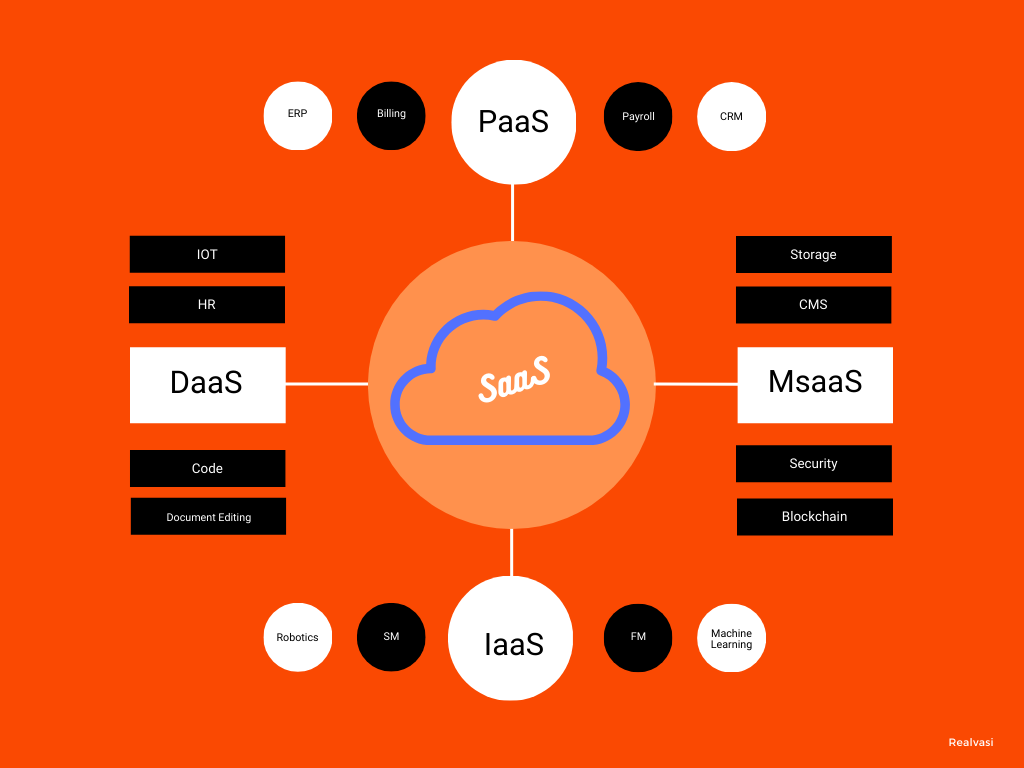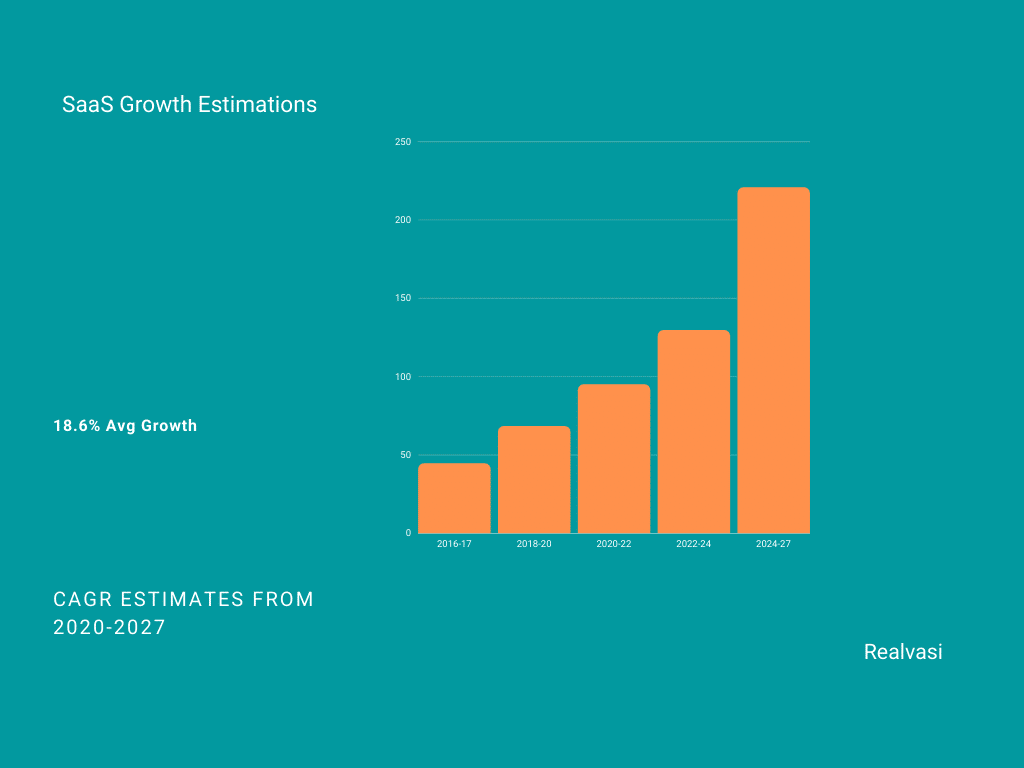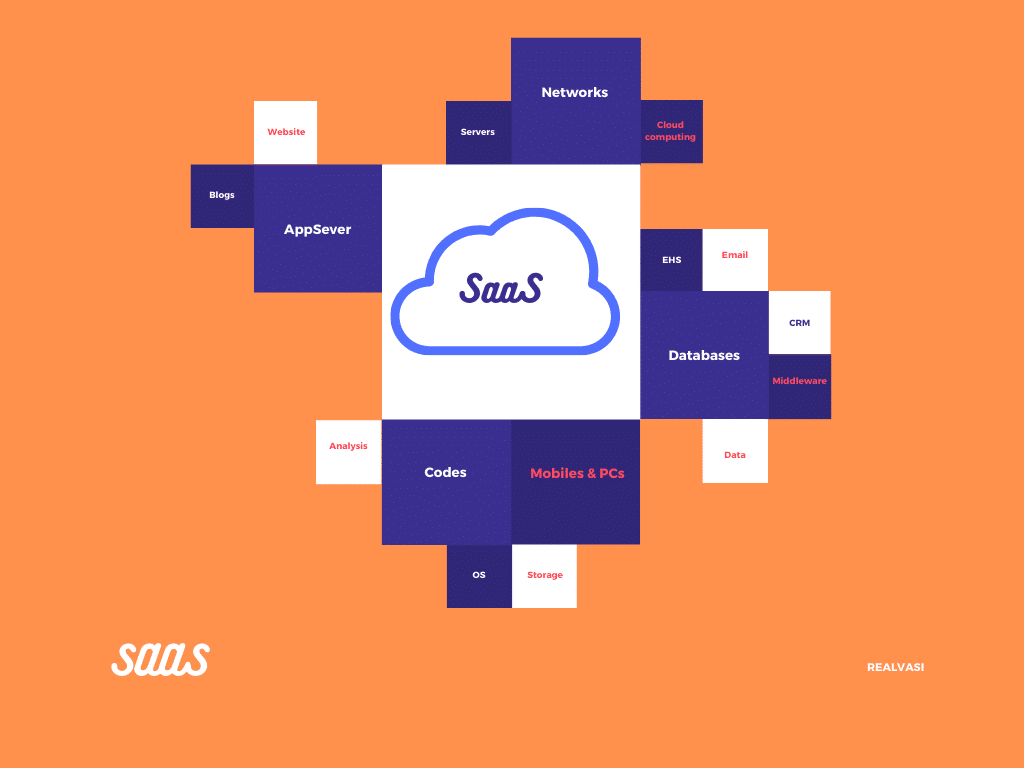What is Software as a Service?
SaaS is a software distribution method that allows users to access information from any computer with an Internet connection and a web browser.
In this arrangement, the software program supplier hosts and maintains the application’s servers, databases, and code.
To perform the essential software functionality, large amounts of data must be transmitted between the back-end knowledge center and the app.
Transferring sensitive business data to a public cloud-based SaaS service can result in security and regulatory difficulties, as well as significant costs for migrating large amounts of data.
Its application can be accessed from any internet-enabled device such as a smartphone or laptop.
The software and relevant data are stored in the cloud and are available to consumers from various data centers, making them accessible via the Internet and web browsers.
Customers pay a monthly subscription or a license fee to a third-party provider to make an application available over the internet under this model.
SaaS is closely linked to the ASP (Application as a Service) provider and the models for providing on-demand computing software. In the model of Software on Demand, the provider gives network-based access to the customer to a single copy of the application he has created as a SaaS distribution.
SaaS companies distribute apps via the Internet, allowing users to access them from any device or place with an Internet connection.
SaaS applications are customizable and can be integrated with other business applications and applications common to all software vendors.
Although they cannot access an organization’s internal systems, databases, or services, they offer integration protocols and application programming interfaces (APIs) that operate over an extensive network.
What is the use of SaaS?
SaaS is a software sales model in which a third-party provider hosts an application and makes it available to customers via the Internet.
SaaS, along with Infrastructure as a Service (IaaS) and Platform as a Service (PaaS), is one of the three main cloud categories (PaaS).
It is used in this model where customers (users) access an application via the Internet and the application is hosted on a multi-tenant cloud infrastructure.
Instead of investing in additional internal server capacity and software licenses, companies can customize their software as a monthly service subscription to scale consumption based on project requirements and other variables.
The most obvious and frequently cited advantage of this sales model is the reduction in the initial costs of developing, deploying, and maintaining software applications.
Large companies can transfer software development and maintenance costs to third parties and focus resources on data management and backup.
In theory, SaaS transfers the costs associated with the initial purchase, regular maintenance, and safety management to a third-party vendor, allowing customers to devote resources to other productive ventures.
Providers take care of the development, deployment, and maintenance of software applications without the cost of supporting customers beyond their subscription.
Once installed and maintained, users of this application can access it from anywhere via a web browser, thin client, terminal, or device.
What are the Software as a Service Examples?
- Cloud computing can be considered as SaaS.
- Infrastructure as a Service (IaaS),
- Platform-as-a-Service (PaaS) or
- Desktop Service (DaaS)
- Managed Software Services (MSaaS),
- Mobile Backend Service (MBaaS),
- Data Center Service (DCaaS)
- IT Management Service (ITMaaS).

The SaaS model, also known as on-demand software, hosted software, or web-based software, dispenses with traditional software installation, maintenance, and management techniques in favor of delivering cloud-based applications over the Internet. This has been integrated into the strategies of leading enterprise software companies.
Cloud programs run on underlying software, and it refers to enterprise software applications delivered in the cloud.
Nowadays, These systems can be customized on-site by the customer from top to bottom, and cloud-based software offers the average business more agility and flexibility.
Today, It Offers all types of core business functions, from human resources to resource planning for companies.
Top 15 business applications is being supported by SaaS Companies
- Machine Learning,
- Robotics,
- Email collaboration(Marketing),
- IoT business Applications,
- Loyalty,
- Customer relationship management (CRM),
- Billing,
- Payroll,
- Sales management,
- Human resources,
- Financial management,
- Database management,
- Enterprise resource planning (ERP),
- Content management,
- Document editing and management.
Because users pay for the software rather than acquiring several licenses for various computers, It is simple to implement, update, and debug, as well as less expensive (or at least has reduced upfront expenses).
It is also included in many business applications such as file sharing, email, calendar, loyalty management, and human resources.
A hodgepodge of lightweight applications that combine data visualization and functionality from multiple services into a single service distinguishes SaaS applications from on-premise software because on-premise software is not integrated with an enterprise firewall.
In the cloud industry, Software as a Service, also known as Cloud Application as a Service, is the most extensively used alternative for businesses.
Application Service Providers (ASPs) are companies that make money by managing data centers and hosting applications on their own networks for customers.
It is a cloud-based service that downloads and updates the software automatically to your desktop PC over an enterprise network so you can access the application via an Internet browser.
Applications such as office software, standardized communication, and a wide range of other business apps are available. Software as a Service, better known as cloud application services, uses the Internet to provide its users with applications managed by third parties.
Cloud-based software is the standard deployment method in the business technology world of 2021, from large corporations to small mom-and-pop shops.
There are more than 150 services offered by Amazon Web Services (AWS) that provide businesses and individuals with all the tools they need, including databases, IoT business applications, machine learning, storage, robotics, security, loyalty, blockchain, and more.
SaaS Global Market and its Trends
In the information technology industry, an overview of the global market for cloud-based Software as a Service applications.
Global market trends, data from 2016 and 2017, and cumulative annual growth rates (CAGR) projections to 2022.
By 2022, the global SaaS market for Business Applications is estimated to have grown from $44.4 billion in 2017 to $94.9 billion.
From 2017 to 2022, the average annual growth rate was 16.4 percent.
Upstream raw materials and equipment, as well as downstream demand, will be analyzed. The study focuses on the worldwide market’s key industry players.
It includes company profiles, product images and specs, capacity, production, price, cost, sales, and contact information, among other things.
The company’s strategic industry analysis in this study includes key highlights from the Global Software as a Service market research report.
The market size, projections, trends, growth drivers, challenges, and vendor analysis for 25 vendors are all examined in our industry study.
The study gives an up-to-date picture of the current global market situation, as well as the latest trends, drivers, and industry environment.
Tables and figures help to analyze the global and global market research Software As A Service, provide essential statistics on the state of the industry, and provide useful guidance to enterprises and market stakeholders.
The research provides an up-to-date overview of the present worldwide market scenario, as well as the most recent trends, drivers, and industry environment.
During the forecast period, rapid changes in business dynamics are expected to benefit the market, as cloud-based solutions can support business operations under changing conditions such as economic uncertainty, increased mobile phone adoption, and changing regulations on Internet use and applications.
Through the synthesis and compilation of data from numerous sources, as well as the analysis of key criteria, the report presents a thorough picture of the market.
The global software as a service market was estimated at $68.2 billion in 2020 and is expected to reach a revised size of $220.5 billion by 2027, a CAGR of 18.2% during the 2020-2027 analysis period.
Demand for subscription-based pricing models has led legacy companies to switch their software solutions to the SaaS consumption model.

Other cloud services such as Infrastructure-as-a-Service (IaaS), Platform-as-a-Service, and PaaS are also growing, but have reached a plateau in productivity.
Speaking of SaaS market size from a global perspective, the market continues to grow robustly and by 2020 will reach a total of $62.3 billion, reflecting remarkable growth statistics by SaaS.
Global IT spending in economies is suffering, but cloud growth is a bright spot: cloud spending is expected to increase by 6.3% year on year.
According to SaaS market research, business organizations are pushing for more agile and automated processes in order to stimulate robust growth.
It is expected to grow by 12% over a five-year period if taken into account the compound annual growth rate projections (CAGR).
SaaS Marketing Strategy and Growth in Pandemic
The growth in the business restructuring to recover from COVID-19 has led to restrictive mitigation measures, involving social isolation, distant operations, and business closing, leading to operational challenges.
However, overall growth in the SaaS industry has remained constant over the years as more and more companies adopted SaaS solutions in a variety of business functions, extending the original SaaS area beyond core engineering and sales applications, empowering SaaS E pioneers such as Salesforce to model immense growth.
During the forecast period, the market is expected to benefit from the rapid changes in market business dynamics as cloud-based solutions can support business operations under changing conditions.
Dynamic market conditions include economic uncertainty, competition, the increasing adoption of mobile phones, and changing rules on internet use and applications.
Large companies such as Microsoft are considering cloud providers and software providers that SaaS is part of cloud computing services.
This market consists of the sale of cloud-based Software as a Service or software solutions that can be bought on a subscription or pay-per-use basis and used for applications and organizational purposes, with customers accessing applications via the Internet using a web browser.
SaaS has been integrated into the strategies of leading enterprise software companies. Software-as-a-Service is a software licensing and delivery model that is licensed by the company on an individual subscription basis and hosted locally, in contrast to traditional, expensive software, where companies buy, install and manage their own in-house servers for on-demand software.
On-demand software or Software as a Service customers no longer need to maintain expensive hardware and other resources necessary to access vendor-hosted software or client programs through a web browser.
Instead of maintaining a centralized, vendor-based software distribution model, SaaS tools offer a feature-rich online service that you can access from the Web or mobile browser without downloading and installing major program updates.
To promote, acquire, and administer cloud-based software, apps, and information services, SaaS Marketing uses standard marketing techniques.
Key Takeaways in 2021
It helps organizations optimize a variety of features, including marketing, sales, and customer service. Examples of these types of applications are virtualization software, middleware, application integration, content delivery solutions, and much more. These applications not only have access to the systems, databases, and internal services of their firm but also feature integration protocols and application programming interfaces (APIs) that operate over a wide network.
A Hodgepodge of lightweight applications that combine data, presentation, and functionality from multiple services into a single service distinguishes SaaS applications from on-site software because the software can’t be integrated on-site with a proprietary firewall.
Besides IIAS and IaaC, It is one of the three major cloud service models.
These models are cloud providers that deliver their own hosted data center resources over the Internet to customers. The models differ in the completeness of the products.
Conclusion:
The above article is all about What is SaaS ? Its Uses and Examples, Market Global Share, Marketing Strategy and Growth in Pandemic .
Note: The information in this article is based solely on information found on the internet and does not come from any private sources.
